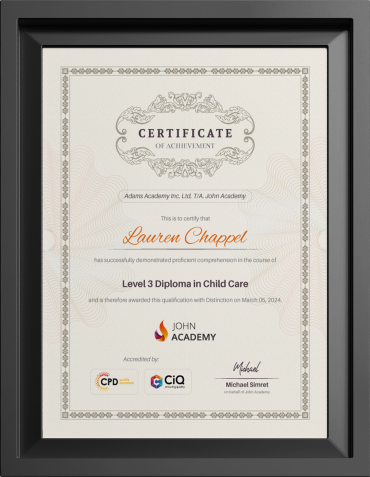
It’s both an exciting and daunting prospect: starting an online marketplace. From Airbnb to Amazon, online marketplaces have wholly changed the way we shop, stay, and interact with others. What this has opened up are dazzling new opportunities to entrepreneurs keen on connecting buyers and sellers in innovative ways. The process of creating a successful marketplace requires much more than just a great idea; you need the right steps, features, and strategy for the platform to fly off into successfully scaling.
Throughout this course, you will be taken through how a marketplace can be taken from concept through to a really scaling business using these steps. Let’s get started.
Step 1: Selection of Niche and Idea Validation
Every great marketplace starts with focus. Ask yourself: for what uniquely valuable problem could you create a solution by matching buyers and sellers? The more focused your niche is, the more easily you will attract just the right audience. Here are some examples of such niche marketplaces:
- Peer-to-peer outdoor gear rental services
- Network the pool of chefs with the organizers themselves.
- An e-marketplace for all ecological household products.
Once identified, you can start to validate your niche by way of customer interviews, surveys, or even a simple landing page to show interest in your product. You would be sure to invest in an idea in demand.
Step 2: Marketplace Model Selection
Within marketplaces, various models exist with their own sets of challenges and opportunities. The most usual marketplace models are:
- B2C: Business-to-consumer-a business that sells directly to the customer. Example: Amazon.
- B2B: Businesses that sell for businesses themselves, for example, Alibaba.
- P2P (Peer-to-Peer): Individuals connect with other individuals (e.g., Airbnb).
- Choose one that, together, will work with your niche, audience, and monetization strategy.
Step 3: Listing Key Features and Functions
It should serve the buyers and sellers well. Basic features required on both sides are:
For Sellers:
- Onboarding Tools: These allow sellers to onboard with ease.
- Product Listings: Products’ categorization, image, and description should be included.
- Analytics Dashboard: Performance, Orders, Reviews-all in detail on one single platform.
For Purchasers:
- Search and Filters: Allow the user to find precisely what they’re looking for.
- Secure Payment: Allow different options for payments that guarantee smooth and trouble-free processes.
- Rating and Review: Confidence is established through review mechanisms.
Shared features, of course, include user authentication, messaging systems, and notification alerts that will keep the interest of both parties.
Step 4: The selection of appropriate technology stack
Online marketplace development might be oriented in another way:
- No-code solution: One gets quick getting started, no coding is needed with Sharetribe, though such solutions are not that scalable.
- Custom Development: From-scratch development for marketplaces requiring totally unique features or those businesses anticipating huge growth in the near future.
- SaaS Solutions: A shortcut to marketplace-ready software that may speed up customization to an extent.
Check your budget, technical expertise, and timeline, then choose the appropriate way of development.
Step 5: Implement the security sensitive payee system
Payments are the heart of any marketplace. Probably consider Stripe or some multi-currency, safe PayPal payment gateway from the buyer’s side. One more thing to consider:
- Charge commission per transaction
- Offer subscription plans to vendors
- Listing Fee for premium visibility
Of essence would be adherence to set regulations for protection, such as PCI DSS, against sensitive financial information.
Step 6: Give more attention to UX and interfaces design.
A smooth, intuitive user experience is crucial to attract and retain users. Your design should include:
- Ease of Use: Enable buyers to find what they seek, and find it easily.
- Mobile-First Design: Most customers are making their purchases via mobile, so your marketplace needs to be top-notch on any screen size.
- Quick Loading: Because of less patience among users, page loading speed optimization is an important activity.
Step 7: Create trust and safety mechanisms
In a marketplace with total strangers, building trust is paramount. Best practices to follow:
- Identity Verification: Verify the merchant accounts to avoid scams.
- Escrow payments hold onto the funds until both parties are satisfied.
- Dispute Resolution System: Fair treatment of problems arising between buyers and sellers.
- Moderation Tools: automatically or manually filter out inappropriate content using AI/Manual Review.
Marketplace security, if fully transparent, is directly proportional to the amount of people that will join it.
Step 8: Launch the Minimum Viable Product Live
Now, as you learn how to build a marketplace, it’s time to launch it.
It’s just the worst idea ever to launch a marketplace with every feature possible in it. Begin small, with just the MVP-the simplest version of your marketplace with essential features. That way, you’re able to:
- Get feedback from early users.
- Find the bugs and improvements.
- Pivot quickly based on market response.
MVP helps you to validate the product rather than investing time and energies into it.
Step 9: Bring Buyers and Sellers on Board with Smart Marketing
The marketplace requires buyers and sellers, but there is often a chicken-and-egg problem. Thereafter, focus on highlighting the strategies that would subsequently help in the following:
- Getting Sellers on Board: Incentivize – for example, no fee to early sellers on to the platform.
- Customer Acquisition: Engaging consumers with rewards through Social Media advertisements and referral schemes.
- Content Marketing: That means creating resourceful blog articles or guides driving organic traffic.
- SEO Optimization: Product listing and landing page optimization, ensuring exposure to applicable search terms.
It is going to balance both sides of the market with its continuous marketing.
Step 10: Continuous Monitoring and Improvement
Once your marketplace goes live, monitor the following key metrics:
- Quantities of the users, buyers, and sellers.
- Average order value and transaction volume
- Churn Rate vs Retention Rate
Leverage analytics for intuitive sensing of pinch points in user behaviors and run optimization cycles on the platform-be it new features, design improvements, or an expanded region of the marketplace.
Step 11: Scale with Confidence
To scale up the marketplace, solid infrastructure is required, along with a scalable business model. Some strategies through which it can be grown include:
- Automate Operations: Provide access to these facilities to automate customer inquiries, order management, notifications.
- Expand into new markets: After dominating one niche or region, enter other segments or countries. The companies should invest in the retention of customers; hence, loyalty programs make users attached through recommendations.
Scaling up doesn’t imply merely adding more users but means that your platform efficiently handles the extra load.
Closing Remarks
Of course, building any marketplace takes so much time, strategy, and patience, but these proven steps-from finding your niche to scaling the platform-will go a long way toward building an online marketplace of your dreams that attracts and retains both buyers and sellers. Long-term success is all about iteration and feedback from users. Those marketplaces that will keep pace with the trend, stay consistent in optimizing their services, and put users first will continue to grow in this ever-competitive digital space. Good luck on your journey from a startup to marketplace success!

